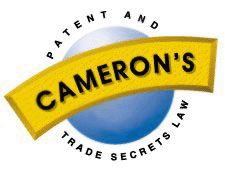
Patent Assignments
copyright 1997, 1998 Donald M. Cameron, Aird & Berlis
Cameron's Canadian Patent & Trade Secrets Law: Home Page; Index
 |
Patent Assignments
|
Patent applications can be assigned or bequeathed, in whole or in part (Patent Act s. 49(1) & s. 49(2)). Once assigned, the application cannot be withdrawn without the permission of the assignee (Patent Act s. 49(2)).
Patents can be assigned in law, in whole or in part, by a written document (Patent Act s. 50(1)). The co-owner of a patent cannot divide his part ownership into two or more parts without the concurrence of all owners of the patent (Forget v. Specialty Tools).
Every assignment, of a patent (Patent Act s. 50(1)) or patent application (Patent Act s. 49(3)), must have an affidavit of a subscribing witness or other proof that the assignment was executed by the assignor and everyone else who signed it (Patent Act s. 49(3) & 50(3)).
The inventor can assign the invention, but for the assignment to have any effect on a patent application or patent, the assignment must be filed in the Patent Office (Patent Act s. 50(2), 51).
There is something like a "first-to-file" system for assignments. If the rights to a patent are assigned (or if an exclusive licence is granted - something analogous to an assignment), the assignment (or exclusive licence) must be filed in the Patent Office (Patent Act s. 50(2)). If there are two assignments affecting a patent, it is the first assignment to be filed in the Patent Office that governs (Patent Act s. 51).
In the United States, where the Applicant is always the inventor(s), if the rights to the invention have been assigned to someone else, the patent will issue to the assignee.
The Federal Court of Canada has jurisdiction to change the records of the Patent Office respecting title to a patent to vary or expunge an entry (Patent Act s. 52).
Return to:
Cameron's Canadian Patent & Trade Secrets Law: Home Page; Index
Cameron's IT Law: Home Page; Index